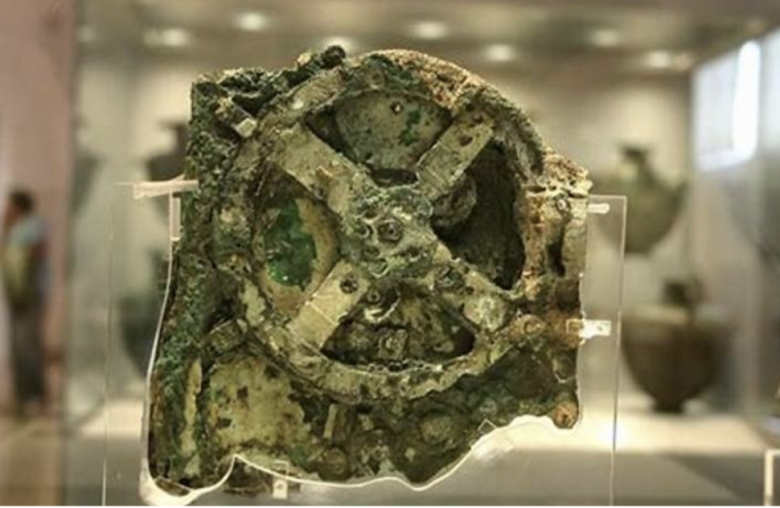Writing in the first century BC, Cicero mentions an instrument “recently constructed by our friend Poseidonius, which at each revolution reproduces the same motions of the sun, the moon, and the five planets.” Archimedes is also said to have made a small planetarium, but these were just taken as literals as none were discovered to prove their existence, but were rescued.
When a Greek sponge diver named Elias Stadiatos discovered the wreck of a cargo ship dating back to the first century B.C. off the tiny island of Antikythera in 1900, it was the statues lying on the seabed that made the best impression on him. He returned to the surface and gabbled that he had found a heap of dead. The ship’s cargo of luxury goods also included jewellery, pottery, fine furniture, wine, and bronzes, but the most important finds proved to be a few green, corroded lumps – the last remnants of an elaborate mechanical device (known today as the Antikythera Mechanism).
The mechanism was originally housed in a wooden case about the size of a shoebox, with dials on the outside and a complex assembly of bronze gear wheels within. Around 30 separate gears can be distinguished using X-ray photographs of the fragments, led the late Derek Price, a science historian at Yale University, to conclude that the device was an astronomical computer capable of predicting the positions of the sun and moon in the zodiac on any given date. A new analysis, though, suggests that the device was cleverer than Price thought, and reinforces the evidence for his theory of an ancient Greek tradition of complex mechanical technology. Michael Wright, the curator of mechanical engineering at the Science Museum in London, has based his new analysis on detailed X-rays of the mechanism using linear tomography. Analysis of the results concluded that the device was specifically designed to model a particular form of “epicyclic”(The Greeks believed in an earth-centric universe and accounted for celestial bodies’ motions using elaborate models based on epicycles, in which each body describes a circle around a point that itself moves in a circle around the earth) motion
. 
Mr Wright found evidence that the device may have been able to predict the positions of the known celestial bodies for any given date with a respectable degree of accuracy, using bronze pointers on a circular dial with the constellations of the zodiac running around its edge. It’s interesting to speculate how the first century B.C. designers of the Antikythera Mechanism were able to discover the excellent rational approximation 254/19 = 13.36842105 to the astronomical ratio 13.368267.
Mr Wright devised a putative model in which the mechanisms for each celestial body stack up like layers in a sandwich. The celestial bodies can be made to advance or retreat by winding a knob on the side so that their positions on any chosen date can be determined. How closely this reconstruction matches up to the original will never be known. The purpose of two dials on the back of the device is still unclear, although one may indicate the year. Nor is the device’s utility obvious: it may have been an astrological computer used to speed up the casting of horoscopes, though it might just as easily have been a luxury plaything. Mr Wright believed that the original device modelled the entire solar system.
The origin of most modern technology, from railway engines to robots, can be traced back to the elaborate mechanical toys or automata that flourished in the 18th century. Those toys, in turn, grew out of the craft of clockmaking which came from the ancient Greek tradition of complex mechanical technology which was transmitted via the Arab world. Come what may, the Antikythera mechanism still lies as a box of camouflaged mysteries that are yet to be spotted.



